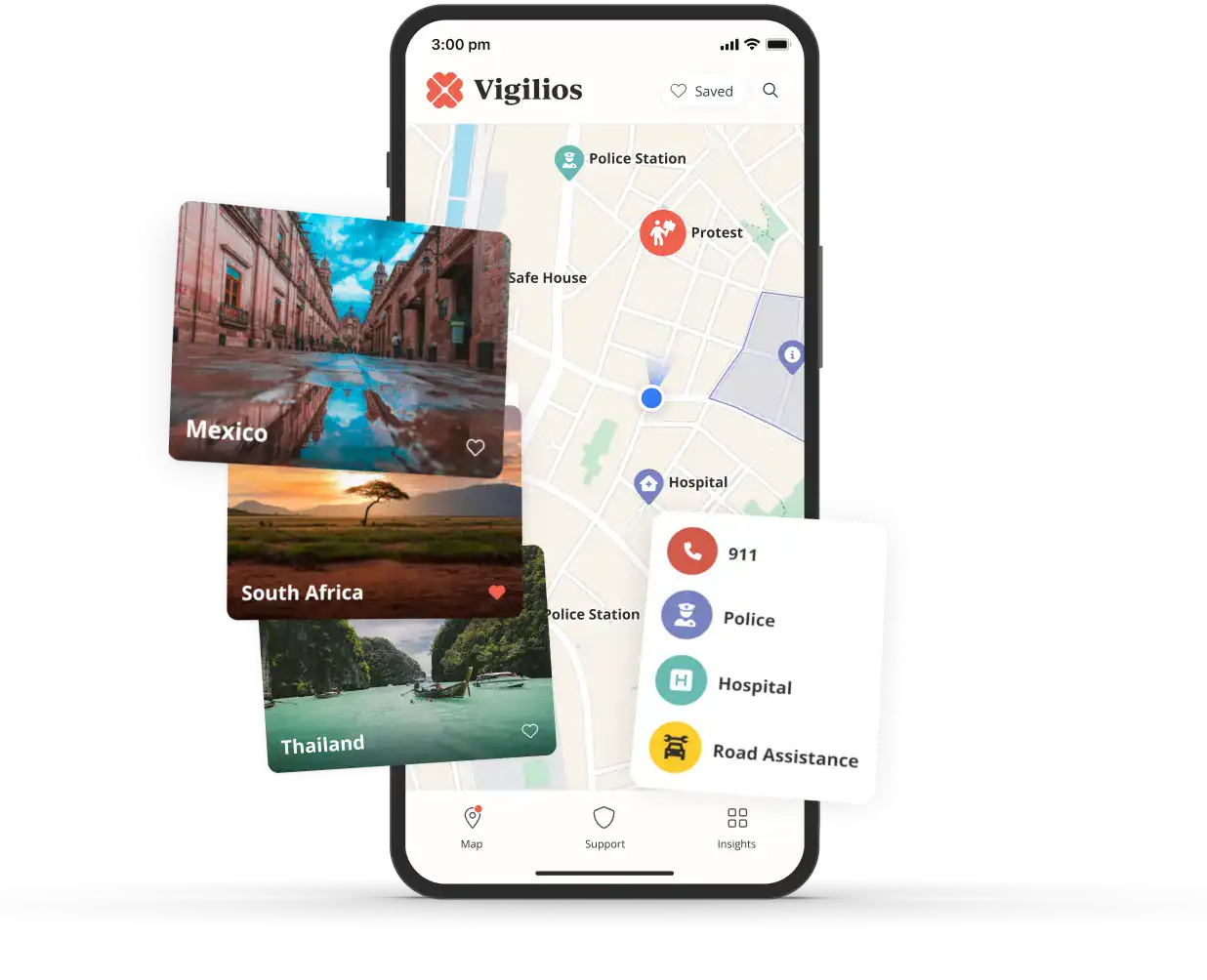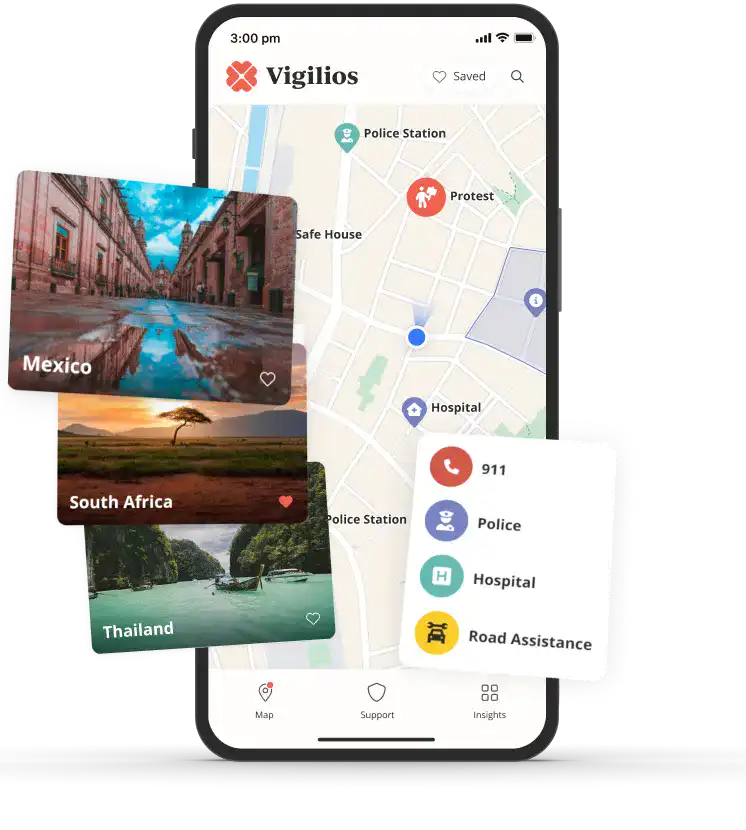Understanding Nature & Environment in Mexico: A Comprehensive Guide
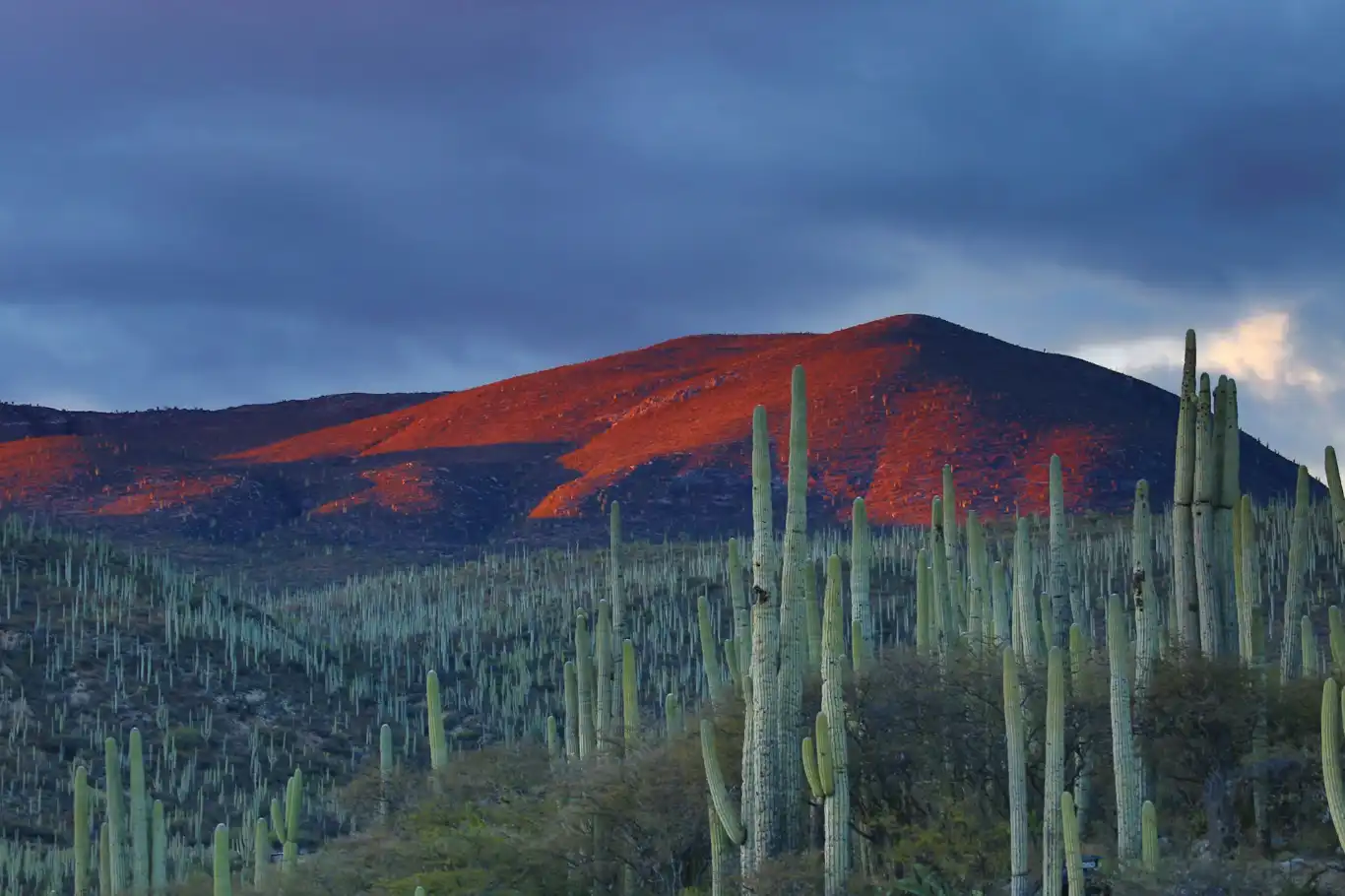
Diverse Climates: From December to April, northern states like Chihuahua present a cooler, desert climate, ideal for those seeking mild temperatures, while southern states such as Yucatán offer warm, tropical weather perfect for beach enthusiasts.
Seasonal Phenomena: Understanding the timing and impact of Mexico's hurricane season and rainy periods is crucial for planning your visit, especially if heading to coastal regions.
Exploring Mexico's natural beauty offers a unique glimpse into its rich ecosystems and distinct weather patterns. As travelers and locals navigate through this vibrant country, understanding its environmental dynamics is key to a safe and enriching experience. This guide dives into the diverse climates, rich biodiversity, and natural phenomena shaping Mexico, offering insights for an informed and respectful journey through its landscapes.
Key Takeaways
Navigating Mexico's Diverse Climates and Best Times to Visit
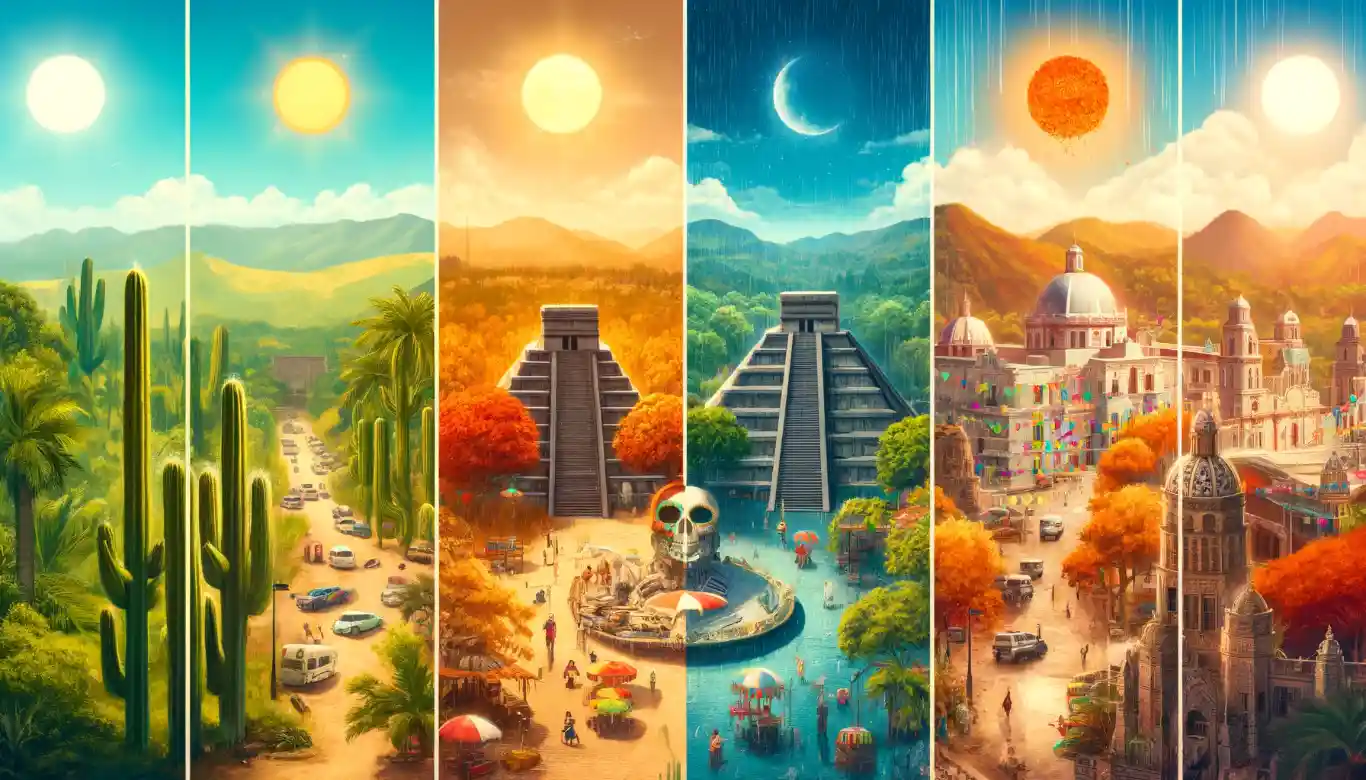
Mexico's climate varies dramatically from one region to another, influenced by factors such as geography, elevation, and proximity to the sea. This diversity creates various opportunities for visitors to experience the country's natural beauty year-round, but it also requires careful planning to choose the best time and place for travel. Here’s an overview of the different seasons across Mexico, along with recommendations on which coasts and cities offer the most rewarding experiences during specific times of the year.
Spring (March to May)
Spring is a delightful time to explore the vast majority of Mexico, as the weather is generally pleasant before the summer heat sets in. This season is particularly ideal for visiting the beaches of the Yucatán Peninsula and the Pacific Coast resorts like Puerto Vallarta and Acapulco, where the temperatures are warm but not oppressively hot. Cities in central Mexico, such as Mexico City and Guanajuato, enjoy mild temperatures and a lower chance of rain, making them perfect for city tours and outdoor activities.
Summer (June to August)
Summer marks the beginning of the rainy season for many parts of Mexico, particularly in the interior and southern regions. However, this is also the best time to visit the northern desert regions, such as Baja California, where the coastal areas provide a cool break from the heat. Beach destinations like Cancún and Playa del Carmen remain popular despite the higher likelihood of rain and humidity.
Autumn (September to November)
Autumn brings the end of the rainy season and the start of cooler, drier weather across the country. This period is ideal for visiting the Copper Canyon in the north for breathtaking views and pleasant hiking conditions. The Day of the Dead celebrations, particularly vibrant in cities like Oaxaca and Pátzcuaro, offer a unique cultural experience during late October and early November.
Winter (December to February)
Winter is the peak tourist season, especially in beach destinations along the Riviera Maya and the Baja California Peninsula, where the weather is sunny and warm, offering an escape from colder climates. It's also an excellent time for whale watching in Baja California Sur. Interior cities like Mexico City, San Miguel de Allende, and Morelia can be cooler, but still comfortably warm in the daytime, making it perfect for exploring Mexico's rich history and architecture without the heat.
Embracing Mexico's Rich Biodiversity
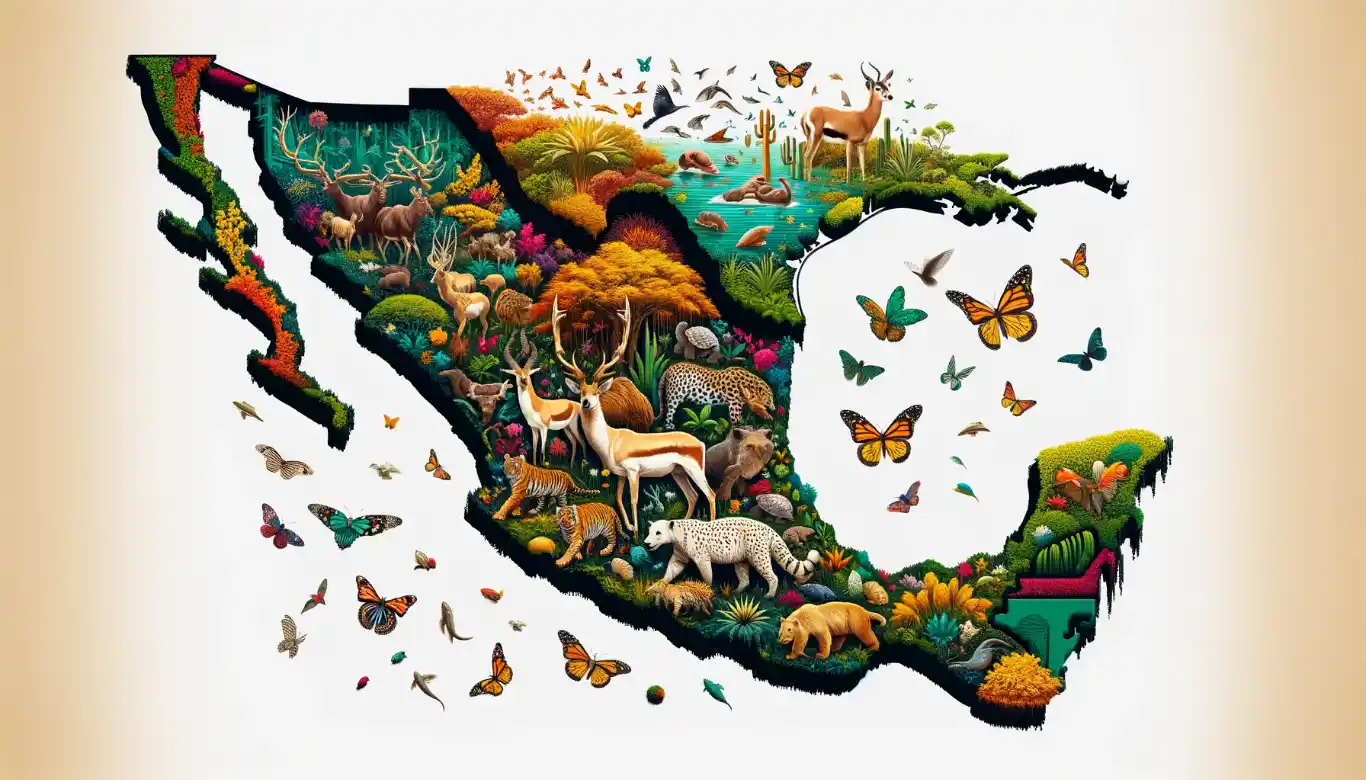
Mexico is home to some of the most varied plants and animals on the planet. Its landscapes range from deserts and mountains to forests and oceans, each hosting unique species that can't be found anywhere else.
Northern Mexico is famous for its deserts, like the Sonoran Desert, where you can find remarkable creatures adapted to the tough, dry conditions. The pronghorn, North America's fastest land animal, and the Mexican gray wolf, the largest wolf in North America, roam here.
Central Mexico offers a mix of forests and mountains. The monarch butterfly migration here is stunning. Every year, millions of butterflies travel from Canada to the fir forests of Michoacán, turning the area orange and black.
Southern Mexico and the Yucatán Peninsula are rich in rainforests, home to jaguars, tapirs, and a fantastic array of birdlife. The coral reefs in the waters off the Yucatán are some of the most lively underwater spots on earth, with countless fish, turtles, and even whale sharks.
Each of these regions shows just how special Mexico's natural world is. By visiting and learning about these places, we can help protect them for the future. Whether you're watching whales off the Baja coast, exploring the ancient forests of Chiapas, or snorkeling in the Caribbean, Mexico's wild side is a treasure worth exploring.
Understanding Natural Disasters and Environmental Challenge

Living in or visiting Mexico means facing the possibility of natural disasters, such as earthquakes and volcanic activity, especially in the central and southern regions. Additionally, hurricanes pose a significant threat to both coasts from June to November. Awareness and preparedness are key to navigating these challenges safely.
Hurricanes and Severe Weather Patterns
Severe weather, including hurricanes, landslides, and flash flooding, is a reality in Mexico, especially from June to November during the hurricane season. Such events can lead to travel disruptions and pose safety risks. Protecting yourself during these times involves listening to local authorities, knowing your evacuation routes, and monitoring updates from the US National Hurricane Center.
Earthquakes
Mexico is no stranger to earthquakes, experiencing them frequently along with subsequent aftershocks. These tremors can disrupt essential services and pose safety risks. Familiarizing yourself with earthquake safety measures wherever you are staying or visiting is crucial for your safety.
Tsunamis
The threat of tsunamis following significant seismic activity is real, especially along Mexico's coasts. Registering with alert systems like the Global Disaster Alert and Co-ordination System and the Pacific Tsunami Warning Centre can provide crucial early warnings. If local authorities advise or if you notice signs of a tsunami, such as a sudden sea level change, seek higher ground immediately.
Volcanic Activity
With active volcanoes like Popocatepetl and Colima, volcanic activity is another natural hazard in Mexico. Volcanic ash can disrupt flights and affect health, particularly for those with respiratory issues. Staying out of affected areas, monitoring local media, and following the advice of local authorities, including evacuation orders, are essential steps to stay safe.
Stay Hydrated: Mexico's sun can be intense, especially in coastal and desert areas. Always carry water to prevent dehydration.
Sun Protection: Use sunscreen with high SPF, wear hats and UV-protective sunglasses, and seek shade during peak sun hours (10 AM to 4 PM).
Dress Appropriately: Lightweight, breathable clothing helps manage the heat. For cooler highland areas, layering is key.
Acclimate to Elevation: In high-altitude locations like Mexico City, take it easy for the first few days to adjust to the height.
Beware of Rip Currents: When swimming in the ocean, be aware of and understand how to escape rip currents—this knowledge can save your life.
Travel Insurance: Ensure your travel insurance covers hurricane-related issues, including trip cancellations and emergency evacuations.
Protect Important Documents: Keep passports, insurance cards, and other important documents in a water-resistant container.
Learn Safety Measures: Familiarize yourself with the safety measures, evacuation routes, and emergency shelters recommended by local authorities and your accommodation.
Emergency Contacts: Keep a list of essential contacts, including local emergency services, the nearest embassy or consulate, and your accommodation's contact details.
Stay Informed: Leverage apps like the Vigilios App for real-time weather updates. The National Hurricane Center also offers detailed forecasts and alerts.
Drop, Cover, and Hold On: Know the earthquake safety drill – drop to the ground, take cover under a sturdy piece of furniture, and hold on until the shaking stops.
Stay Indoors: If indoors, stay there. Indoors, away from windows, is often safer than being outside.
Evacuation Plan: Familiarize yourself with your accommodation's earthquake evacuation plan.
High Ground: If you’re near the coast and feel an earthquake or receive a tsunami warning, move immediately to higher ground.
Tsunami Alerts: Register for tsunami alerts from systems like the Global Disaster Alert and Co-ordination System and the Pacific Tsunami Warning Centre.
Environmental Safety Tips for a Safe & Enjoyable Stay in Mexico

Here's your comprehensive checklist for staying safe in various weather conditions and during environmental disasters.
General Weather-Related Safety Tips:
Preparing for Environmental Disasters
Natural disasters such as hurricanes, earthquakes, and tsunamis require specific preparedness strategies. Here’s how to gear up for your trip, particularly during hurricane season, and general tips for environmental disaster preparedness.
Preparing for Your Trip During Hurricane Season
Earthquake Preparedness
Tsunami Awareness
By keeping these safety tips in mind, you can enjoy Mexico’s stunning environments while staying prepared and safe, regardless of the natural challenges you might face.
Frequently Asked Questions

What is the best time to visit Mexico?
The best time is between December and April, when there is less rain and a lower risk of hurricanes.
Are there any regions in Mexico particularly prone to earthquakes?
Southern and central regions, including Mexico City, are more susceptible to earthquakes due to their location near tectonic plate boundaries.
How does Mexico's biodiversity compare globally?
Mexico ranks among the top countries worldwide for biodiversity, with a vast number of species unique to its varied habitats.
What should travelers know about the hurricane season in Mexico?
It's crucial to monitor weather updates and have a contingency plan if traveling to coastal areas from June to November. More detailed safety tips can be found in our article on navigating hurricane season in Mexico.
How are Mexico's natural landscapes protected from environmental threats?
Through national parks, protected areas, and conservation initiatives, Mexico works to safeguard its natural heritage from threats like deforestation and pollution.

